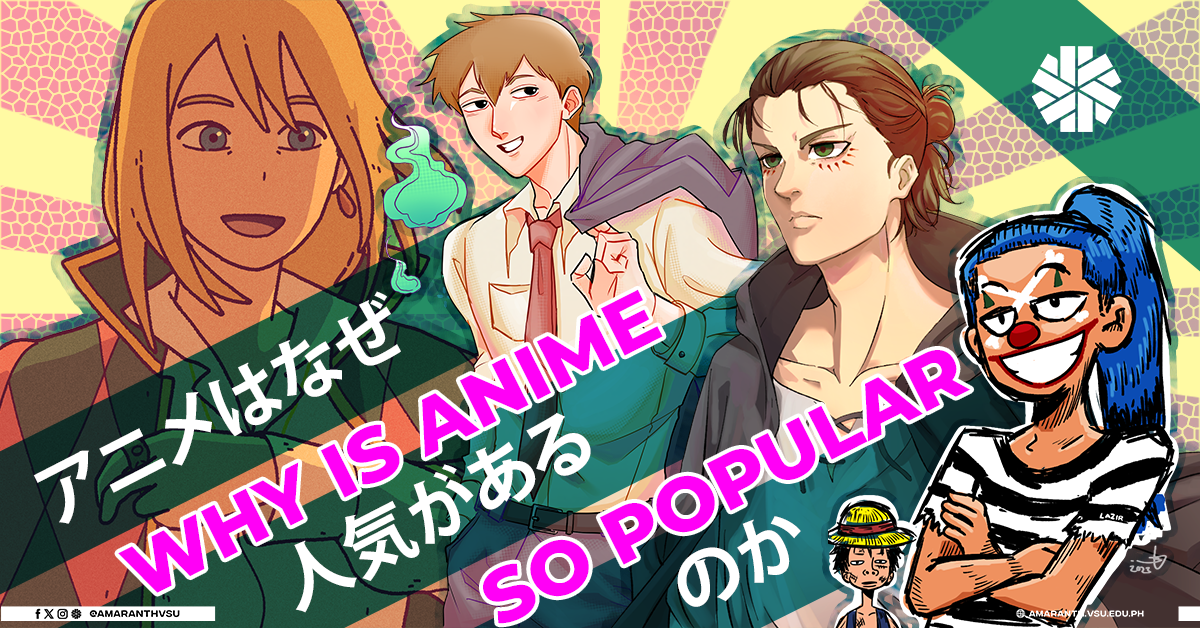It’s a grand time to be alive when famous anime have simultaneously begun and ended. Attack on Titan finale, SpyxFamily Season 2 opening, Jujutsu Kaisen Season 2— you name it, you have it. With all the advent and denouement of these animes, it’s no surprise that people of all ages have been going onto streaming sites just to catch up on their favorite episodes. Yet, have you ever wondered why this type of media genre is still so famous, despite its existence 100 (yes, a hundred!) years ago?
History of Anime
[ 1917-1920 ]
Anime ( アニメ) is an abbreviation of the English word, “animation” (アニメーション). In its humble beginnings, they weren’t using the famous ‘cel animation technique’ (a technique for 2D animation using celluloid sheets) when it came to production yet. The early animators were only using chalkboards, paper cut-outs, or sometimes drawing onto the film.The first recorded Japanese animated film was set somewhere between 1907 and 1917: “Nakamura Gatana” (trans. Dull Sword) was the name, playing only for 4 minutes. When a tremendous earthquake shook Japan in 1920, most of the early animes were lost in the rubble. Thankfully, some still exist today— Nakamura Gatana being the primary and oldest example.
[ 1930s to ’40s ]
In 1935, when Walt Disney created Snow White and the Seven Dwarves, the introduction of ‘cel animation’ spearheaded the production of new animations, however, it was proven futile as funding was heavily needed. During World War II, propaganda was being manifested by the government to enhance their war efforts against the West. Animators were encouraged to help the cause. In 1943, “Momotaro no Umiwashi” (Momotaro’s Sea Eagles) was produced, its story of cute heroes gearing for battle persuaded the watchful audience.
[ Post-war ]
Yet since then, the production of anime has been continuously growing and expanding. Its rise became explosive during the post-war period, specifically in 1948, when the avant-garde Toei Animation was founded and produced a lot of shorts with storytelling and story features similar to and/or heavily influenced by Walt Disney films.
In the 1960’s, a great shift of interest to Television happened. January 1, 1963, was the momentous moment when “Tetsuwan Atomu”, well-known as Astro Boy was aired. Due to its overwhelming popularity and booming success, it managed to wiggle its way to U.S. television. This became the foundation as the genre of anime was shaped to fit mecha genres and science fiction. Shying from the 1980s, anime eventually became part of the pop culture in Japan. The rest is history, if you’re interested to Google it all.
Anime in the Philippines
Like the West, the Philippines was swept up in the anime craze. Although it was originally hindered in the 70s during the Marcos regime, anime still found its comfortable place in the hearts of Filipinos. Voltes V is a major example; once restricted during Martial Law in fear of raising the opposition, this gold mine of an anime has now been freely watched and even has its new modernized adaptation. No one can simply get over anime from the well-loved character of Naruto, the male lead of the titular Inuyasha, and the pretty, shining girls from Sailor Moon. Anime in the Philippines has been part of the growing-up culture, with TV stations playing the anime before or after the news. There are even otakus (someone who knows a lot about anime) who usually uphold their reputation by holding cosplays and many other forms of entertainment to keep the love for anime and tradition alive.
Now, why is anime so popular?
Eye-catching art. If you grew up watching Inuyasha, then you will always remember the white-haired youkai named after the series. Or the cute and enchanting characters in Pokemon? The animations in anime have always been so pretty and eye-catching, that even children would be drawn to the series. Not only that, the characters have always had their signature looks that make it easier to remember. Bet you’d squeal when you see your favorite waifu/husbando with their familiar style cameo!
Interesting stories and diverse genres. Unlike the repetitive and recyclable plots in Filipino drama or the boy-meet-girl for Western cultures, animes have diverse genres that you can easily mix and match to your taste buds. Ranging from the saddest angst in Anohana and Shigatsu Wa Kimi No Uso to the hyped and badass action in Jujutsu Kaisen, the choices are endless. Combined with the first reason with the art, the characters in anime can also relate easily to the audience with their true-to-life thoughts and mannerisms, creating a bond with the audience and the series. Genres are also not limited to the standards like romance and horror. In anime, it includes shounen (targets young men), shojo (for young women), seinen (for both genders), harems, and even interesting and unlikely takes on a slice of life.
Artistic expression. Most anime nowadays feature a lot of dimensions and are not only limited to men and women. LGBTQ themes have been examined in Yuri!!! On ICE, Banana Fish, and many more. Animes also share meaningful and powerful messages that resonate with their fans, creating an impression that can last for a long, long time.
Accessibility. Believe it or not, one can easily acquire anime on YouTube lately. Streaming sites like Crunchyroll, Netflix, and Funimation provide easy access to anime that people want to watch. The same case for mangas. They’re mostly free to watch, so prepare your data access!
Fandom. For fans, establishing a community for an anime can fortify their love and bond for it. One can be lucky when they are part of a warm and homely community, providing a safe haven to share their love and adoration. It can be a different story when the fandom is toxic, but what is more important is the bond you establish and sharing the love of those who share similar tastes as you.
It’s no surprise that anime has been around far longer than we think, given that it provides a safe haven to those who watch and/or read. What are you waiting for? This is a sign for you to chill out and binge on your favorite anime while the holidays are fast approaching. How about you, what’s your favorite anime?


